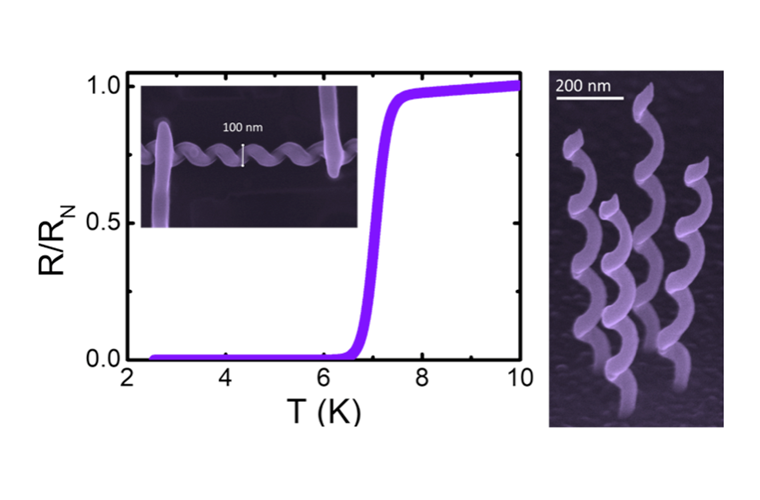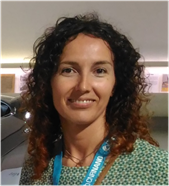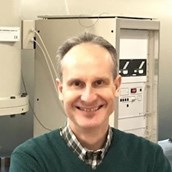Printing 3D superconducting nanohelices using a Helium microscope

Some innovative schemes have taken advantage of the third dimension (3D) for the development of high-performance and energy-efficient electronic components. Thus, 3D nano-superconductivity could represent a breakthrough for future electronics components, particularly for sensors, energy-storage components and quantum computing.
He+ focused-ion-beam (FIB) microscopy in combination with a precursor gas allows one to fabricate three-dimensional nanostructures with an extreme resolution, and a considerably higher aspect ratio than other FIB-based methods, such as Ga+ FIB induced deposition, or other additive manufacturing technologies.
In this work, we report the direct writing of 3D superconducting nano-helices grown by He+ FIB.
"NFFA-Europe has given me a priceless opportunity to develop my research project related to the fabrication of 3D complex superconducting nanostructures using a Helium microscope.”
The method is based on using He+ FIB that describes a circular shaped pattern with a proper overlapping between two serial FIB spots and its dwell time that favors uniform growth along the third dimension, whereas the W(CO)6 precursor material is delivered and adsorbed on the growing surface. Nanohelices with tailored dimensions are fabricated varying several growth parameters, such as the diameter of circular shaped pattern, the dwell time in each point and the number of passes that the circular shaped pattern is run.
"The grown 3D nanohelices have diameters as small as 100 nm and pitches down to 200 nm, making them the smallest and more-highly-dense packed nano-helices ever grown, which is unachievable with other manufacturing techniques”.
"Prof. Dominique Mailly, as the responsible scientist for the He+ microscope, gave me easy access to the equipment for two weeks and provided support on the microscope when I need it".
The 3D nanohelices exhibit superconducting properties below 7 K. In addition, we experimentally found evidences of particular vortex and phase-slip patterns due to their helical 3D geometry, which were supported by numerical simulations.
"Our methodology denotes an outstanding bottom-up approach for the fabrication of innovative, high performance and compact 3D nano-architectures, which are expected to be applied as building blocks of future electronic components".
"NFFA-Europe has given me a priceless opportunity to develop my research project related to the fabrication of 3D complex superconducting nanostructures using a Helium microscope.”

SEM images of 3D nanohelices with different dimensions grown by He+- FIBID (52º tilted stage). Adapted with permission from (Rosa Córdoba, Dominique Mailly, Roman O. Rezaev, Ekaterina I. Smirnova, Oliver G. Schmidt, Vladimir M. Fomin, Uli Zeitler, Isabel Guillamón, Hermann Suderow, and José María De Teresa,Three-Dimensional Superconducting Nanohelices Grown by He+-Focused-Ion-Beam Direct Writing, Nano Lett., 2019, 19, 12, pp 8597–8604). Copyright (2019) American Chemical Society.
November 15, 2019, Nano Lett., 2019, 19, 12, pp 8597–8604.
Three-Dimensional Superconducting Nanohelices Grown by He+-Focused-Ion-Beam Direct Writing
Rosa Córdoba, Dominique Mailly, Roman O. Rezaev, Ekaterina I. Smirnova, Oliver G. Schmidt, Vladimir M. Fomin, Uli Zeitler, Isabel Guillamón, Hermann Suderow, and José María De Teresa,
Refernce DOI:10.1021/acs.nanolett.9b03153
NFFA Europe facilities that I have been used to obtain the presented results are available in Centre de Nanosciences et de Nanotechnologies, Marcoussis, France.
1) Orion NanoFAB: He+ focused ion beam microscope, Omniprobe multi-gas injection system.
2) Magellan Scanning Electron Microscope.

Dr. Rosa Córdoba
ID Researcher: M-3060-2014. ORCID code: 0000-0002-6180-8113.
Dr. Rosa Córdoba is presently a Junior Leader researcher at the Molecular Science Institute, ICMol (Universitat de València).
With a strong background in Nanotechnology, Material Science and Physics, her research interests focus on the fabrication and characterization of smart nanomaterials in the three dimensions of space by using focused beams of electrons or ions (Ga+, Ne+ and He+). Such advanced nanomaterials experience superconducting or magnetic behaviour, capabilities that allow to use them as building blocks for a future generation of nano-electronic devices.
She is co‐author of 53 publications in research journals and 7 book chapters and, its total number of citations is 1243. Her H‐index is 20. In addition, she has participated in 47 national or international conferences/workshops, in which she has given 30 oral communications, 15 of them were invited oral contributions.

Prof. José María De Teresa
ID Researcher: E-2430-2011. ORCID code: 0000-0001-9566-0738.
Prof. José María De Teresa leads the group of Nanofabrication and Advanced Microscopies at the Institute of Nanoscience and Materials of Aragon (CSIC-University of Zaragoza, Spain). He is the coordinator of the Spanish network on Nanolithography (NANOLITO) and the FIB-SEM area in the Spanish National facility for Advanced Microscopies (LMA). Vice-chair of the Condensed Matter Division in the European Physical Society. His main research interests are nanofabrication with focused electron and ion beams, magnetic nanostructures, nano-superconductivity and new materials. He has published more than 200 research articles (h factor=46) and has given more than 80 invited conferences. He has supervised 13 PhD thesis (3 of them in progress). From 1998 to 2000 he developed an individual Marie Curie project under the supervision of the Nobel Prize winner Albert Fert in CNRS-Thomson (Paris).
Rosa Córdoba rosa.cordoba.castillo@gmail.com
Instituto de Ciencia Molecular, Universitat de València, C/ Catedrático José Beltrán, 2, 46980, Paterna, Spain.
José Mª De Teresa deteresa@unizar.es
Address 1: ICMA, Facultad de Ciencias, Campus Plaza San Francisco, 50009 Zaragoza (Spain). Address 2: LMA, INA, Edificio de I+D, Campus Río Ebro, 50018 Zaragoza.

